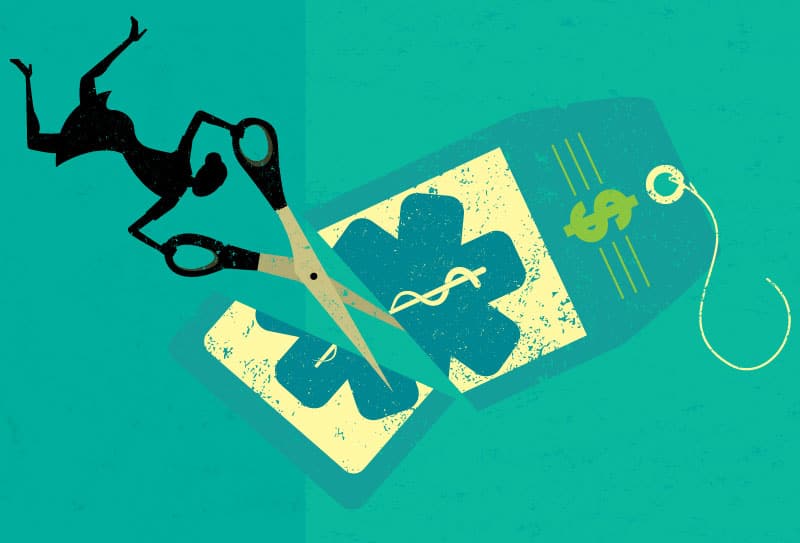
Medical documentation services are the missing piece of the puzzle for clinics, physician offices, and health networks. The promise EMR system providers made about lower costs has not been realized. In fact, costs may be much, much higher since much of the clerical work has shifted from data entry professionals to the clinicians themselves. Although these costs may be hidden, they are very real. Organizations may be paying 16 times more and up for data entry than they should be.
The solution: bring back the medical documentation services clinicians need so they can focus on patient care, not patient records, and ultimately save health care providers money.
Broken Promises: What They Didn’t Tell You About Eliminating Medical Documentation Services
Electronic Health Records (EHRs) or Electronic Medical Records (EMRs) were supposed to save money for everyone from health networks to single-office physicians. They have not. Administrative costs collectively account for about 25% of all healthcare costs, more than most developed nations.

There is reason to believe that EMRs cost the health system even more due to a specific blind spot in the system – a blind spot we should have seen before. Somewhere along the line, we all agreed that it’s okay for clinicians to spend most of their time updating patient records.
The truth is, whatever system you use for records whether it be electronic, paper-based, or a hybrid approach, somebody has to enter and manage the data. Unsurprisingly, hiring medical documentation service professionals is faster and more accurate than asking clinicians to maintain patient records themselves. And, as we’ll find out in the next section, it is also significantly less expensive. So while technically you could eliminate transcription costs, the reality is that the work still needs to be done. All that’s really happened is that you’ve shifted those costs to a much slower and much more expensive worker: the physicians.
The stumbling block is that many health care organizations continue to commit themselves to “cutting transcription costs” as if that particular line item is an end goal in itself. But health care administrators need to look at the bigger picture. Getting rid of clerical services does not get rid of the clerical work. So that (relatively) small transcription cost is now actually much larger but hidden because physicians are now doing more of it themselves.
At the very least, this is an inefficient approach to completing clerical tasks. At most, the hidden costs of clerical work could be costing health care organizations 16 times what they would have paid for the same work – and possibly even more considering the inefficiencies involved. Plus, there are only so many hours in the day, so an extra hour of documentation could also mean losing one hour to see patients as well as their associated billable time.
How Medical Documentation Services Help Physicians and Clinicians Work More Efficiently

Let’s do some math. What costs less – a task that can be accomplished paying $8 per minute or $0.50 per minute?
Now, perhaps you are saying already that it depends on so many factors. For example, are you getting the same quality at $0.50 per minute? Also, does it take the same amount of time? Paying $8 per minute for a task that takes one minute costs less than paying $0.50 per minute if that same task takes them 30 minutes to complete.
So I’ll add this bit of information: the $0.50/minute worker is both faster AND produces better quality, saving time downstream as well.
The question quickly becomes, what’s the catch?
The catch is that blind spot mentioned above. And by the way, these are not made-up numbers. They come directly from a Forbes report on the hidden costs of EHRs. The $0.50/minute worker is a transcriptionist – a very real cost on the books of the accounting department. The $8/minute is the hidden cost of a physician doing the same job more slowly and less accurately.
The reason this cost is “hidden” is because today it’s lumped in with the expected duties of that physician. But that is adding hours and hours to the clinician’s work week. Depending on the salary arrangement, physicians are either getting paid a huge amount of money to complete their own clerical work or they are spending their own time catching up on patient records. Either way, it leads to burnout for the physicians, reduce job satisfaction, and inefficiencies for the medical office, clinic, or health network.
Patients Are Noticing, Too…
What is compounding the problem is that patients are noticing clinicians spending more time looking at their computers than talking with them. Worse, physicians may be missing important clues during the patient encounter, distracted as they are by adding in patient data. So patient care is declining, both in a real and a perceived sense.
Medical documentation services help improve patient care by freeing up clinicians’ time to do what they should be doing: interacting with their patients.
Find Out How Medical Documentation Services Can Help Your Office

Whether you are a single-doctor office, a medical clinic, or a health network, every office can benefit from medical documentation services. Contact iMedat right now to find out how we can design a medical document services system that fits your workflows. With 100% U.S.-based transcriptionists and outstanding customer service, you’ll be amazed at how easy it is to match our documentation professionals with your clinicians for faster, more accurate records. Plus, you’ll reduce clinician burnout and free them up to do what they do best: treat patients.
